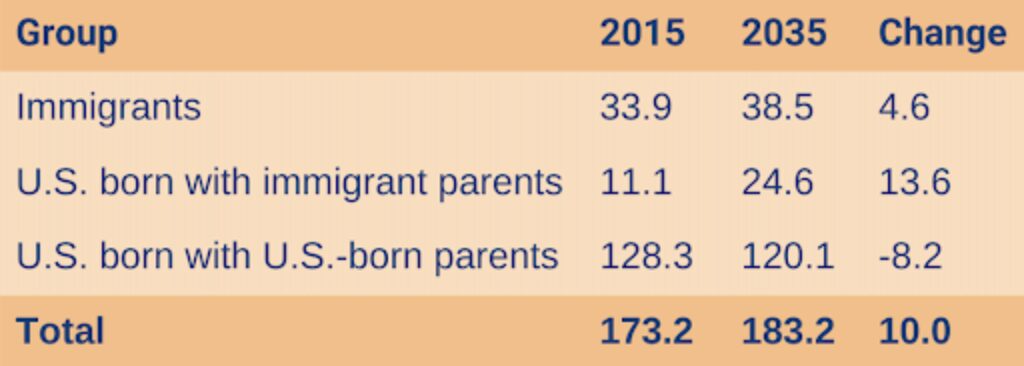Welcoming Speakers of English as a Second Language into the Workplace
Bridging the gap within the walls of your own organization
by Nikhil Bendre - August 25th, 2021
It’s no secret that people with foreign backgrounds, more specifically foreign accents, tend to have a harder time assimilating into workplaces with their American-born counterparts. Interestingly enough, the array of backgrounds that America boasts to carry can often be frowned upon in professional settings when challenges with language barriers and comprehension arise. As a second generation immigrant, this topic certainly hits close to home. That being said, let’s discuss this issue in more detail and what you can do to bridge the gap within the walls of your own organization.
To start, let’s go over some of the immigrant history surrounding this topic:
According to the Census Bureau, the United States foreign-born population reached a record 44.8 million in 2018. Today, immigrants account for 13.7% of this country’s population, nearly triple the share (4.8%) in 1970. However, today’s immigrant share remains below the record 14.8% share in 1890, when 9.2 million immigrants lived in the United States.
Here are some more facts to consider:
More than 1 million immigrants arrive in the United States each year.
Nearly half (45%) of the nation’s immigrants live in just three states: California (24%), Texas (11%), and Florida (10%).
Lawful immigrants made up the majority of the immigrant workforce, at 21.2 million.
There are about 5 million English learners in United States public schools, as of the most recent count in Fall 2016, according to NCES. That’s about 10% of U.S. students. In 2000, only about 8% of U.S. public school kids were English learners.
Immigrants and their offspring will drive growth in the United States workplace.
Spanish was the home language of 3.79 million ELL (English language learner) students in Fall 2016, representing 76.6% of all ELL students. Arabic, Chinese, and Vietnamese were the next most commonly reported home languages. Take a look at the full chart!

Here is a chart to help us get a better idea of the projected change in the United States working-age population from 2015-2035. (Ages 25-64, in millions.)

Scientists are finding that the reasons for that discrimination may actually start with how are brains process foreign accents in the first place. For one thing, if you’re not used to it, it’s simply harder to understand someone who is speaking with a foreign accent.
“We’re less likely to believe something if it’s said in a foreign accent,” says Lev-Ari. In her view, negative judgements are the result of the additional effort that our brains must make to process foreign speech. Our brains then shift the blame for this effort onto the veracity of the speaker. Therefore, an argument could be made that human nature is innately lazy in this sense.
People with foreign accents find it harder to get hired and are perceived as less trustworthy, successful, and intelligent. In other words, foreign-born job candidates often fall victim to blatant xenophobia. Researchers have several explanations for this. First, the extra cognitive effort that it takes to understand someone with a foreign accent can trigger negative perceptions of that person. Second, an individual’s accent signifies their membership in an “in-group” or an “out-group.” We need to actively work towards the abolishment of this hierarchy, so to speak, and recognize that everyone within an organization is on the same team, working together to accomplish common objectives.
Finally, here are some points about discrimination in the workplace to keep in mind:
Immigrants are protected from employment discrimination by laws enforced by the Equal Employment Opportunity Commission (EEOC).
Workplace discrimination complaints based on national origin - which often involve language ability - rose by 76% from 1997 to 2011, when more than 11,800 complaints were lodged with the United States Equal Employment Opportunity Commission.
The U.S. EEOC is tasked with enforcing federal laws prohibiting employment discrimination and has settled several foreign-accent discrimination lawsuits.
All of this being said, what can you do to make your workspace better for your ESL (English Second Language) team members? The key is education. Make sure your team is well informed on the gravity that language discrimination can have on its recipients. Learning a little bit about different cultures can help your team identify the perfect set of soft skills for your office. Also, understand the significance of basic respect for the people around us. We need to eliminate the false assumption that somebody having a foreign accent means that they are less intelligent or capable. A foreign accent means that they can speak at least one other language in addition to English.
-------------------------------------------------------------------------------------------------------------------------------
Part of what makes this country great is the diversity of its population. Unfortunately, the acceptance and celebration of this diversity can seem like an uphill battle in some professional settings. However, with education and mutual respect, we can progress our workforce into a more accepting and welcoming space for people originating from all sorts of backgrounds.
Search...
Product
GoCo
Resources
Articles
eBooks
Webinars
Customer Stories

